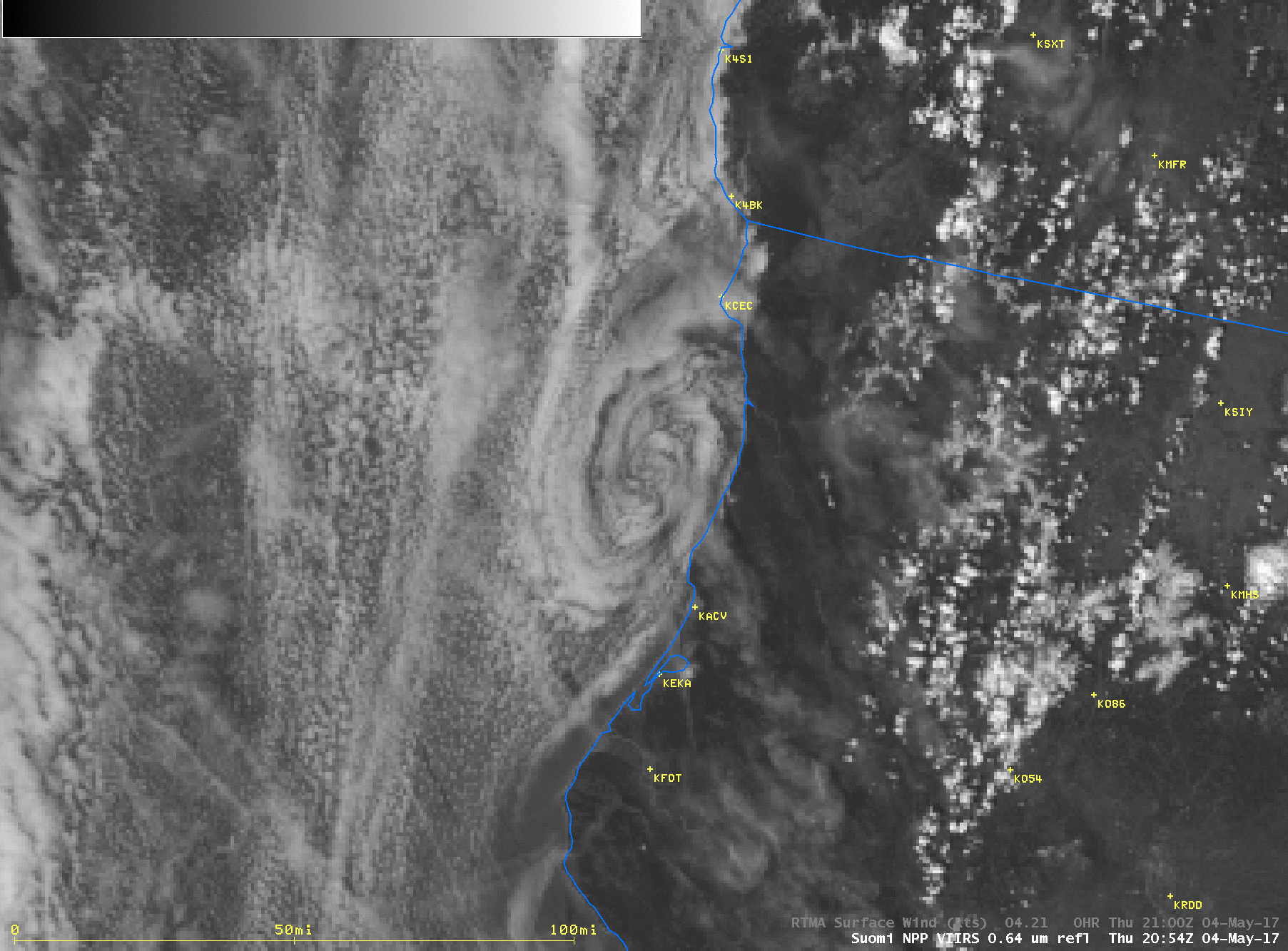Small Eddy and coastal jet off the coast of Northern California
GOES-16 data posted on this page are preliminary, non-operational data and are undergoing testing.
One of the two GOES-16 Mesoscale Sectors was moved from its default position over the eastern United States and placed over the west coast of the United States on 4 May 2017. This allowed 1-minute imagery of a small-scale coastal eddy between Cape Mendocino and Pt. St. George near Crescent City, above, and an associated coastal jet. (Click here to play 300-meg Animated Gif; alternatively, this animation shows the eddy from 1600-1900 UTC as displayed in AWIPS (courtesy Dan Miller, WFO DLH))
A zoomed-in Visible animation of the coastal eddy is shown below; NWS Eureka described it as “one of the best examples of these coastal eddies seen in quite a while”.
GOES-16 Visible 0.64 µm imagery is able to capture not only the eddy, but also the northerly low-level jet that develops off the coast of Cape Mendocino, swiftly moving clouds southward around that feature. A small eddy also develops south of Cape Mendocino. Note also the abundance of cirrus clouds flowing northward along the coast.
The dimensions of this eddy are approximately 70 km in the along-shore direction and 55 km perpendicular to the shore, yet GOES-16 is able to capture and resolve many small-scale cloud bands. The small cloud band streaming south around Cape Mendocino, for example, is only about 6 km wide and is well-resolved; if GOES-16 becomes GOES-East at 75 W Longitude, this is the type of resolution that can be expected in Salt Lake City.
It should be noted that none of the models (including the hourly RTMA, below) resolved this eddy feature.
Thanks to Dan Miller, Science and Operations Officer (SOO) in Duluth for calling this awesome feature to our attention!


